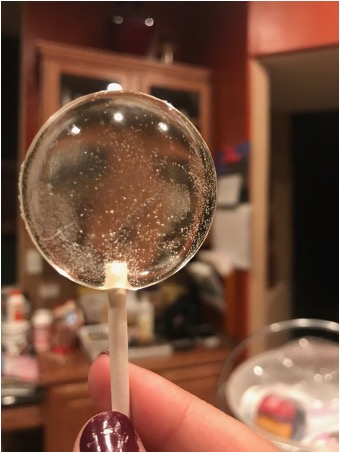Candy Lenses
Overview: This is a fun (and edible!) way to show how placing a lens in front of our field of view can change the way things look
Supplies: Isomalt, distilled water, stainless steel sauce pan, candy thermometer, stove, oven, oven mitts, pyrex measuring cup, silicon molds, cooking spray, lollipop sticks, paper towels (all part of a kit (except the stove and oven) in the OSC demo suite)
Objectives: You don’t need glass or plastic to make lenses. You can use anything transparent that is moldable, even candy!
Setup:
- Request the lollipop making kit from the OSC outreach coordinator
- Follow these step-by-step instructions on how to make the lollipops at home
How to run the demo:
- Pass out the candy lollipops and encourage the kids to look through them.
- Discuss what they see and how the image changes with the shape of different lenses.

What’s Happening?
Actual glass and plastic lenses were used in making the silicon molds to ensure a realistic shape. Once the mods were made, anything transparent that fills that shape, and then cools, will have the same type of properties of an actual glass or plastic lens. As optics students are taught, every material has its own index of refraction. The light will bend slightly differently through glass than it will through isomalt. Isomalt has a index of refraction of 1.63 while BK-7 glass (a standard used glass) is 1.51. Other than the index of refraction difference, the candy lenses will behave like a standard lens to take light and bring it to a focal point.
Learn more: (external links)

